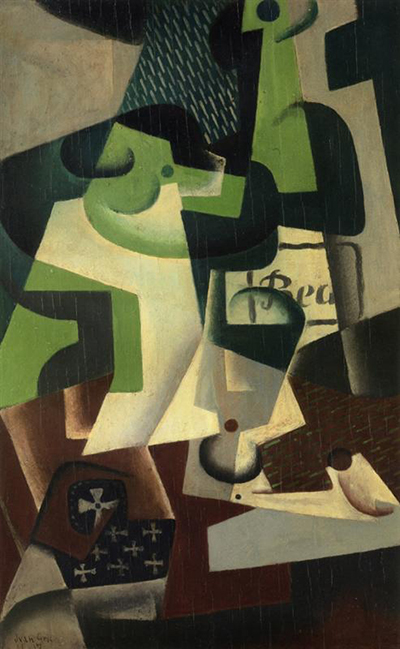Bottle of Beaune and a Fruit Dish was completed by Juan Gris in 1917 and is now a part of a private collection.
The artist uses lighter tones in the centre of the composition in order to give the impression of light coming into the scene. He uses tones of green which perhaps are not common in other still life paintings found in his career and it adds a helpful element of brightness to lift this particular piece. His choice of content is nothing new, of course, with the standards elements of Cubism all to be found here. From the bottles to the table top, it is certainly very much in keeping with the content used in many still life works by all of Gris, Braque and Picasso, though the fourth notable member of the group, Leger, would often go his own way.
The lettering on the bottle is of "Beaune". For those unaware of French wine, this is a specific place that delivers high quality red wine. It is a commune in the Côte de Beaune region of Burgundy and is renowned for the quality of much of its produce. Wine is obviously a major element of French life and this Spaniard had thrown himself 100% into their culture. So much so, that he actually prefered to be called Jean in order to further deepen himself in this nation's society. He would spend most of his working life in France, having been brought up in Madrid which at that time lacked much of an artistic culture.
The overall dimensions of this painting was 61.5 x 38.2 cm, which is relatively small but also consistent with most of this artist's career. His style was impactful and did not use too much detail, therefore the canvases could work at relatively small sizes - compare that to the momentous work of earlier artists such as Rubens or David, whose complex compositions would require huge canvases in order to include every last detail. These different styles mean having to stand closer or further away from the original in order to get the best understanding of it. For example, a room in the National Gallery in London will have much larger space available to enjoy traditional art than perhaps a modern art gallery, where many of the artworks are smaller and can be viewed from a closer position.




